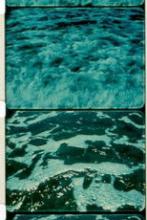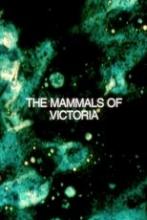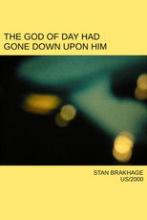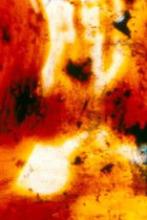
Vancouver Island Quartet
Experimental film series by Stan Brakhage
A Child’s Garden and the Serious Sea (1991)
01 January, 1991
"In his description for A CHILD'S GARDEN, Brakhage quotes from poets Ronald Johnson and Charles Olson (and cites Johnson's poem "Beam 29" as inspiration). But the film also vaguely calls to mind William Blake—more perhaps for his art than his poetry: there is both a sense of darkness and of mystical transport in Brakhage's images. The first film in the loose "Vancouver Island" quartet, Brakhage films locations around the British Columbia locale where his second wife, Marilyn, grew up. He films land, sea, and sky and intercuts frequently between them. Shots are often out-of-focus, to accentuate color and light; they are hand-held, upside down, and fleeting. All of this is no surprise for those who know Brakhage's work: anything and everything is valid, as long as it works." - Cine-File.info
The Mammals of Victoria (1994)
01 January, 1994
The film begins with a series of horizontally running ocean tide waves, sometimes with mountains in the background, hand-painted patterns, sometimes step-printed hand-painting, abstractions composed of distorted (jammed) TV shapes in shades of blue with occasional red, refractions of light within the camera lens, sometimes mixed with reflections of water. Increasingly closer images of water, and of light reflected off water, as well as of bursts of fire, intersperse the long shots, the seascapes and all the other interwoven imagery. Eventually a distant volleyball arcs across the sky: this is closely followed by, and interspersed with, silhouettes of a young man and woman in the sea, which leads to some extremely out-of-focus images from a front car window, an opening between soft-focus trees, a clearing. Carved wooden teeth suddenly sweep across the frame. Then the film ends on some soft-focus horizon lines, foregrounded by ocean.
The God of Day Had Gone Down Upon Him (2000)
28 March, 2000
This film of single-strand photography begins with the "fire" of reflective light on water and on the barest inferences of a ship. Throughout, the interwoven play of light and water tell the inferred "tale" of the film through rhythm, the tempo, through visible textures and forms in gradual evolution, through resultant "moods" generated by these modes of making, and, then, by the increasingly distant boat images, birds, animals, fleeting silhouettes of people and their artifacts, flotsam and jetsam of the sea-dead, as well as (near end, and almost as at a funeral) flowers in bloom, swallowed by darkness midst the crumbling of the sand castles.
Panels for the Walls of Heaven (2002)
26 December, 2002
The last of Brakhage's longer works. Part of the "Vancouver Island" films. "Purple flashes are followed by a curtain of purple and blues, first seemingly static and then in motion. Close-ups of textures of paint evolve into flashes of jewel-like red, then more cascading blues and purples and white - 'falling,' seemingly, down from the top of the screen, at other times multi-directional bursts of rolling colors. Red, blue and yellow course through in an up-down motion, then blues and yellows enter from left and right in a complex medley of not solidly formed, but very vibrant pulsations of color, at times only slightly hinting at a solidity of "wallness" upon which the paint might exist. But it is a "wall" suffused with light." - Marilyn Brakhage




